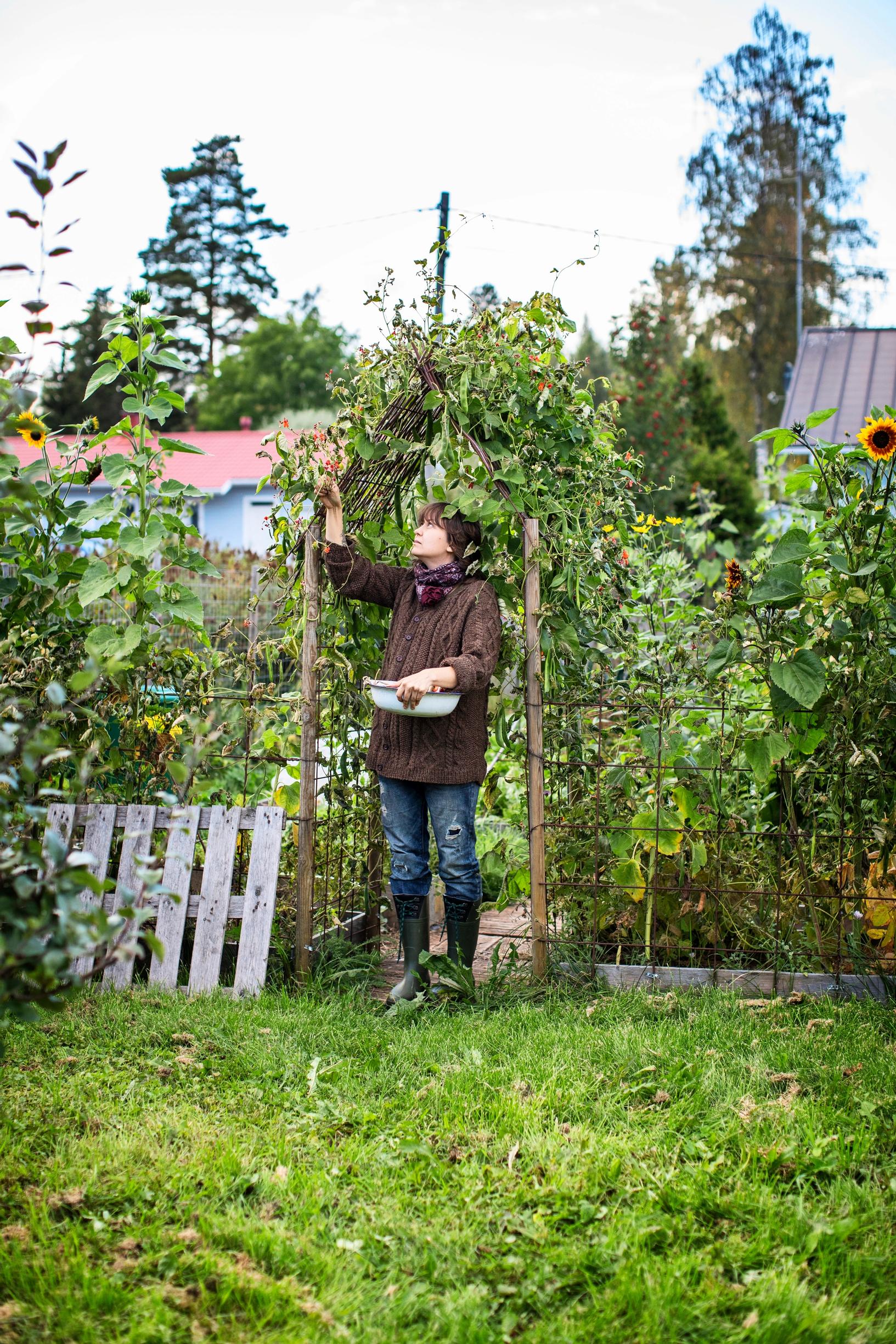
Stella’s vegan garden: “My garden is not just for me”
Stella Karlsson doesn’t try to control nature. She favors plant-based fertilizers and doesn’t let pests discourage her. Read Stella’s tips for a vegan garden!
“I have had a vegetable garden for a long time. When I went from vegetarian to vegan a few years ago, I started wondering what that would mean for my garden.
Standing in front of the chicken manure shelf at the store, I questioned whether I wanted to keep buying it. I looked up alternatives and considered the entire food production chain. If I buy a carrot from the store that’s vegan, it’s still not produced in a fully vegan way. But if I grow it myself and save the seeds, I can make the whole chain vegan. Obviously, at my scale it’s just a hobby, but the idea is inspiring.
Vegan cultivation still isn’t widely known in Finland. I searched for information in foreign books and, in the spring, took a Canadian online course on vegan gardening. Online, I came across the English term veganic gardening. The expression combines vegan and organic. It’s not some separate sect but goes hand in hand with other forms of organic farming. You just leave out animal-based elements and shift your mindset a bit.
Veganism isn’t just about food. In the garden, you can think more broadly about how to sustain life there.
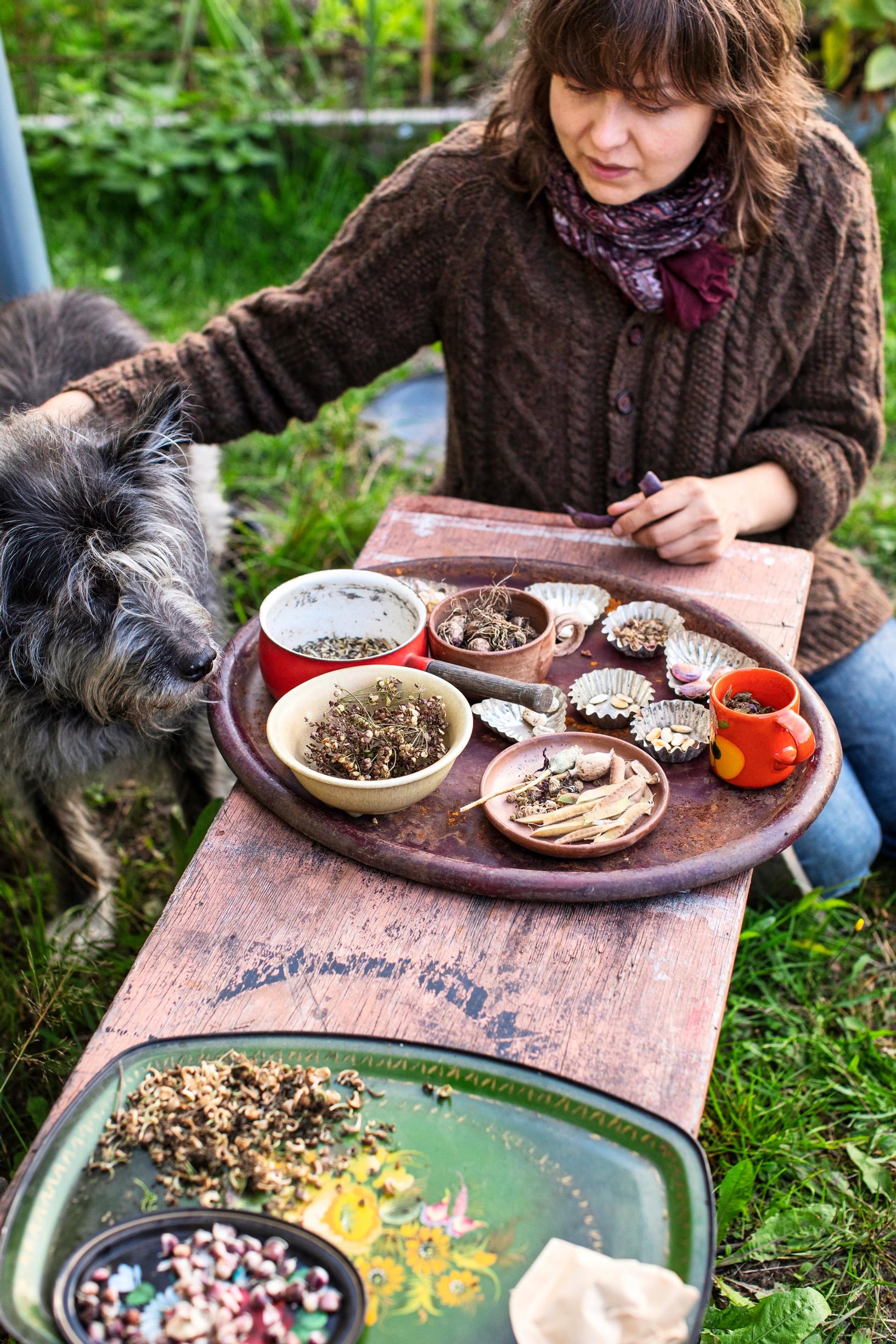
Five years ago, I bought a 1950s wooden house in Jokela, Finland. It was surrounded by an old garden that had become overgrown. At first, I simply observed what sprouted up from the soil. There were apple trees, perennials, and a small potato patch left. This past summer was only the second one when I could focus on the garden instead of renovating. I also got running water on my property. Before that, the well didn’t provide enough water to be able to water the garden.
Garlic, beans, and pumpkins are my favorite crops. They make the best dishes. These days, I have a huge number of trees, as well: there’s peach, apricot, nuts, medlar and so on. People always say you should plant trees very sparsely, but I’m trying to create a forest here.
“My garden is not just for me.”
Next summer, I plan to grow more perennial, edible leafy greens and start a new potato patch. I’m also dreaming of a small garden pond.
On my vegetable plot, I move vegetables around each year, but I don’t systematically follow a crop rotation. I reserve the most nutrient-rich spots for garlic and cabbage. For fertilizer, I like bokashi compost the most, but I don’t produce enough of it for the entire garden. I give my pumpkins and tomatoes well-composted outhouse waste, and this summer I’ve also used a lot of nettle. I often leave the leftover stems and leaves of the plants on the beds to decompose.
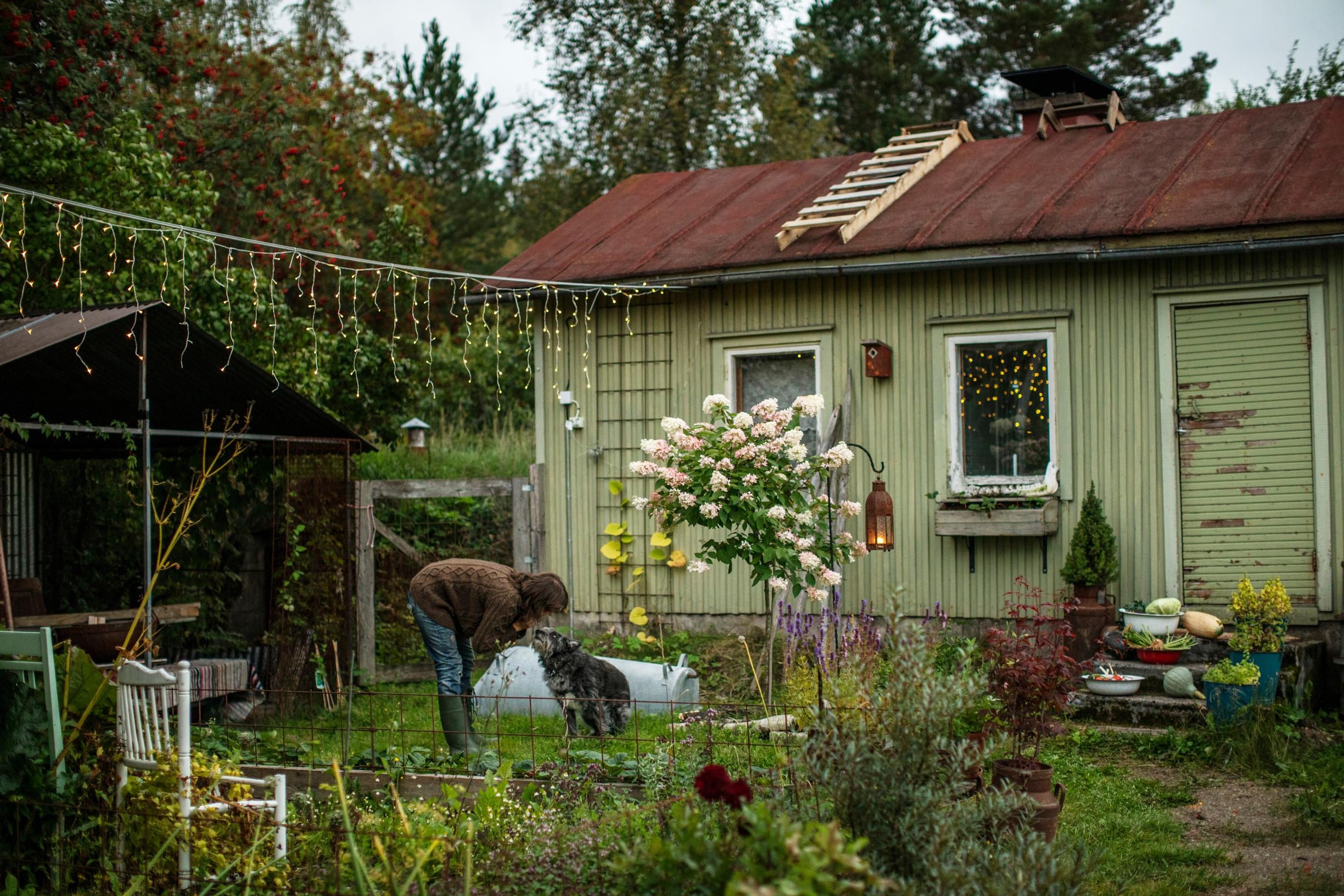
"I’m not a summer person. In my opinion, Midsummer is the most boring time in the world because there’s only one shade of green in nature. September is the best," Stella says.
Parsnip seeds are ready to be gathered. Having your own seed supply means you also know where they come from.
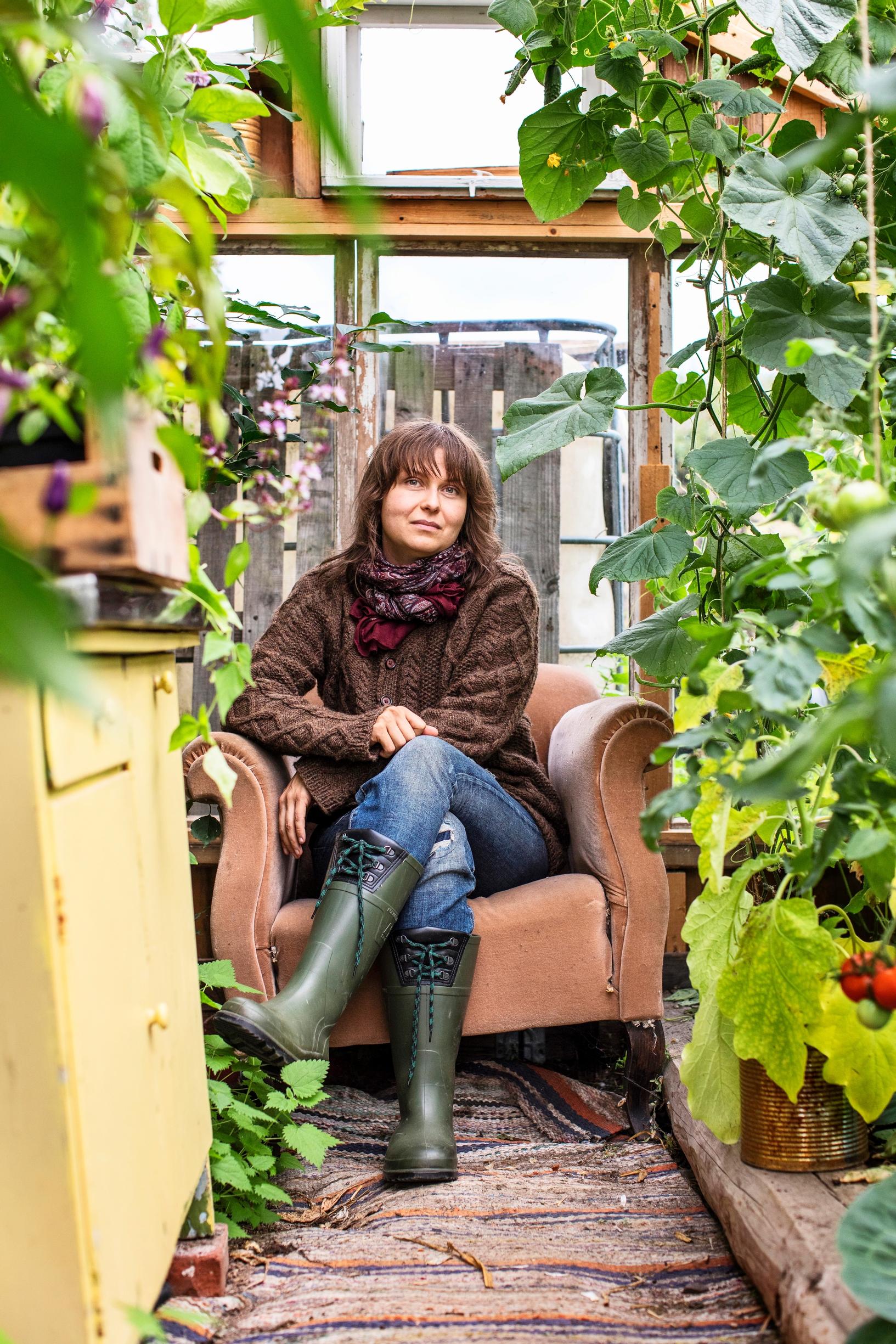
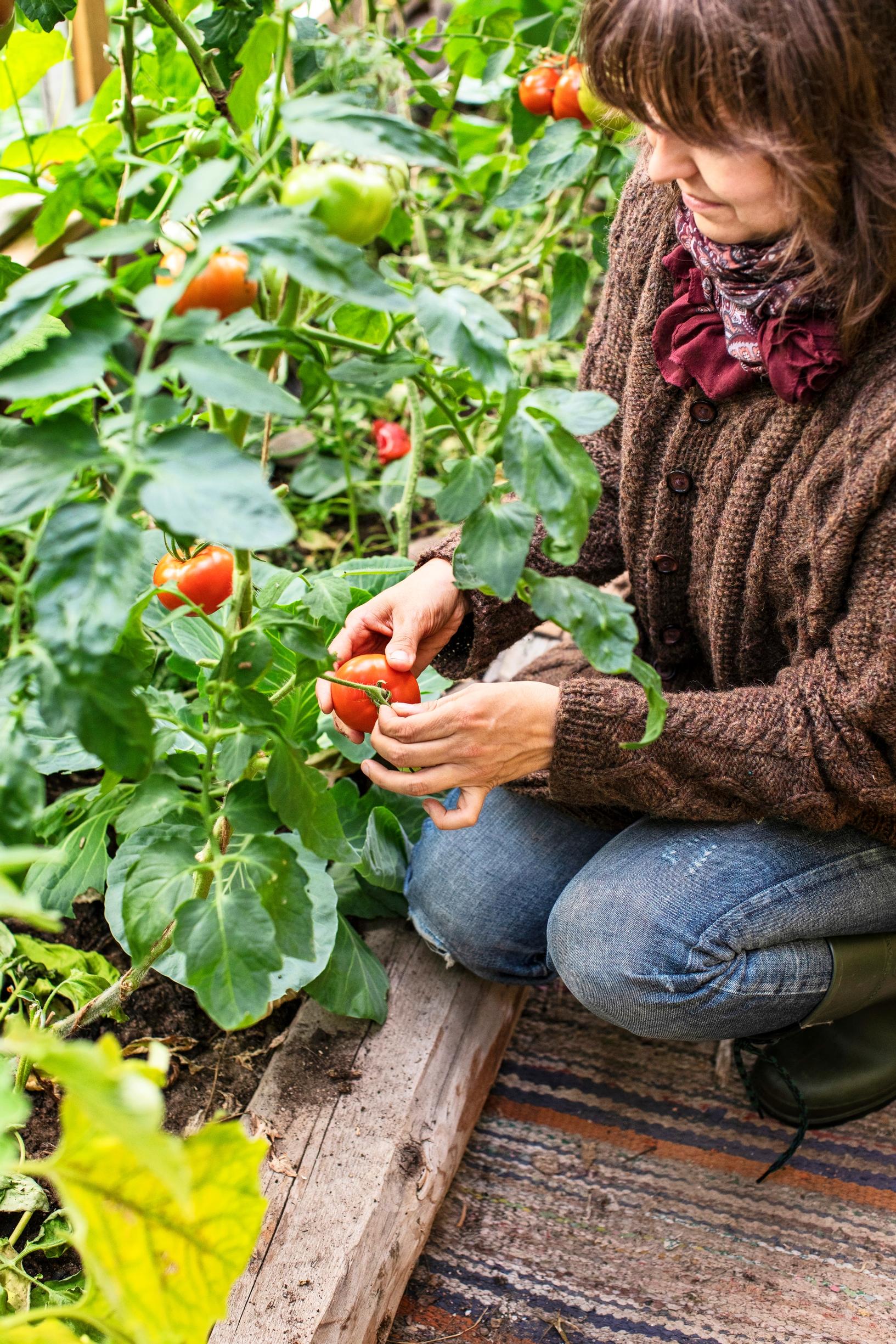
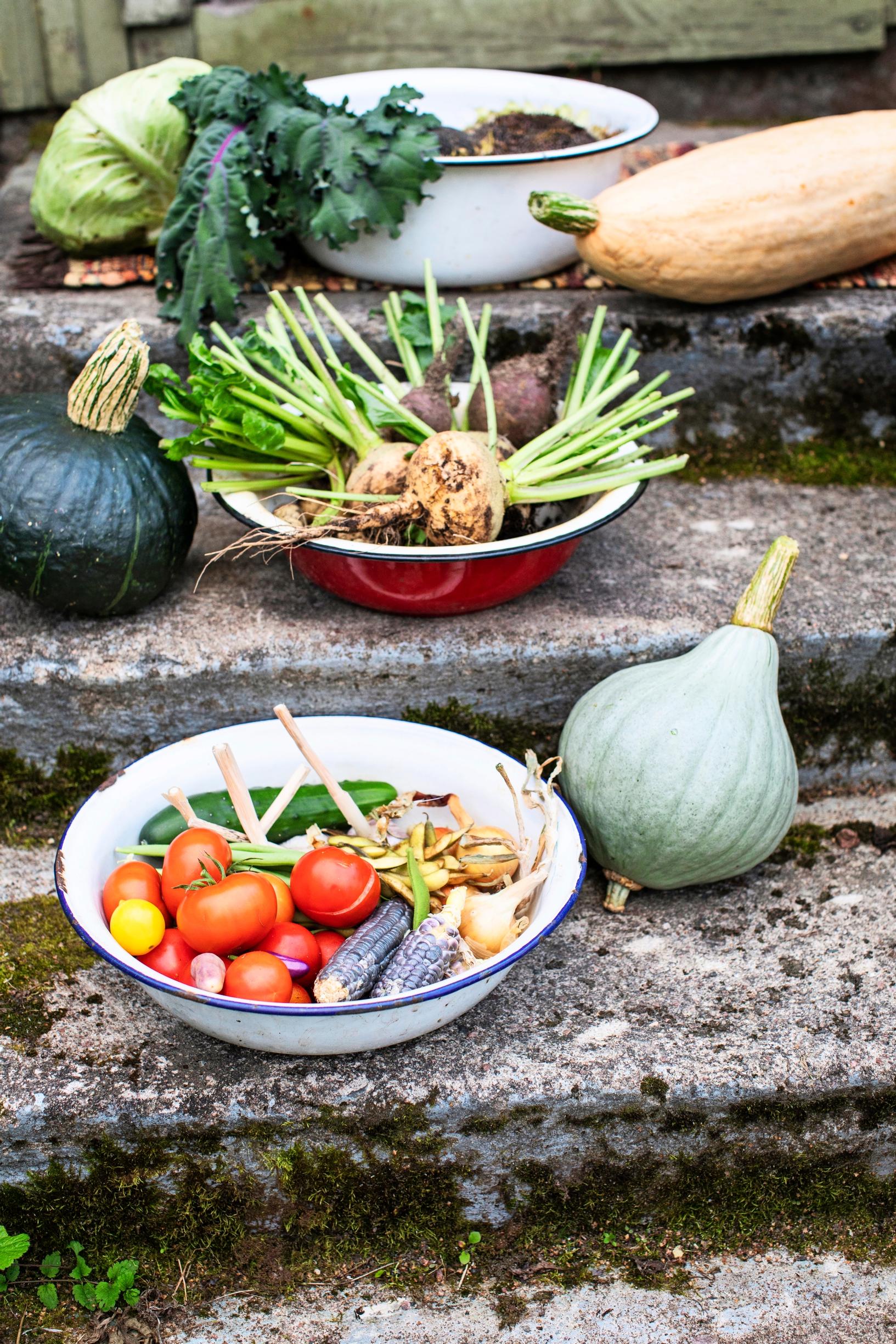
I’m not a summer person. In my opinion, Midsummer is the most boring time in the world, because there’s only one shade of green in nature. September is the best. Plants take on more colors and berries, and there’s far more to see everywhere. I extend the harvest season by growing plants that can be collected late, such as flowering quince, winter apples, and rowan berries. The small fruits of the medlar are at their best only after a touch of frost.
I want to protect animals. I have many birdhouses, and I don’t use nets on my berry bushes because of hedgehogs. I can tolerate a few fieldfares. The seeds from my sunflowers are for the birds. We also share the rowan berry harvest.
“People always say you should plant trees very sparsely, but I’m trying to grow a forest here.”
For a long time, I didn’t want a lawn mower. I’d never forgive myself if even one hedgehog was run over by it. But wild raspberries proved tougher than me. They spread everywhere, and I had to turn to the mower. Otherwise, I don't mind a bit of wildness. However, I don't want the wrong plants taking over.
People often feel compelled to tidy up in their gardens. But what if you didn’t immediately clear away the dry stems and seed pods, and instead let small birds find food in them? Another problem is that there aren’t enough hiding places for animals. That’s why I leave piles of leaves in my garden, and the lot is bordered by brushwood. It’s a kind of no man’s land. Rabbits and hedgehogs get to move around there safely.
My garden is not just for me. I’ve learned to be more accepting of the environment. It’s pointless for people to try to control nature and wage endless battles against weeds. Every year brings some new issue, like the slugs this year that ate my cabbages. But that’s when you just have to say, let’s try again next year.”
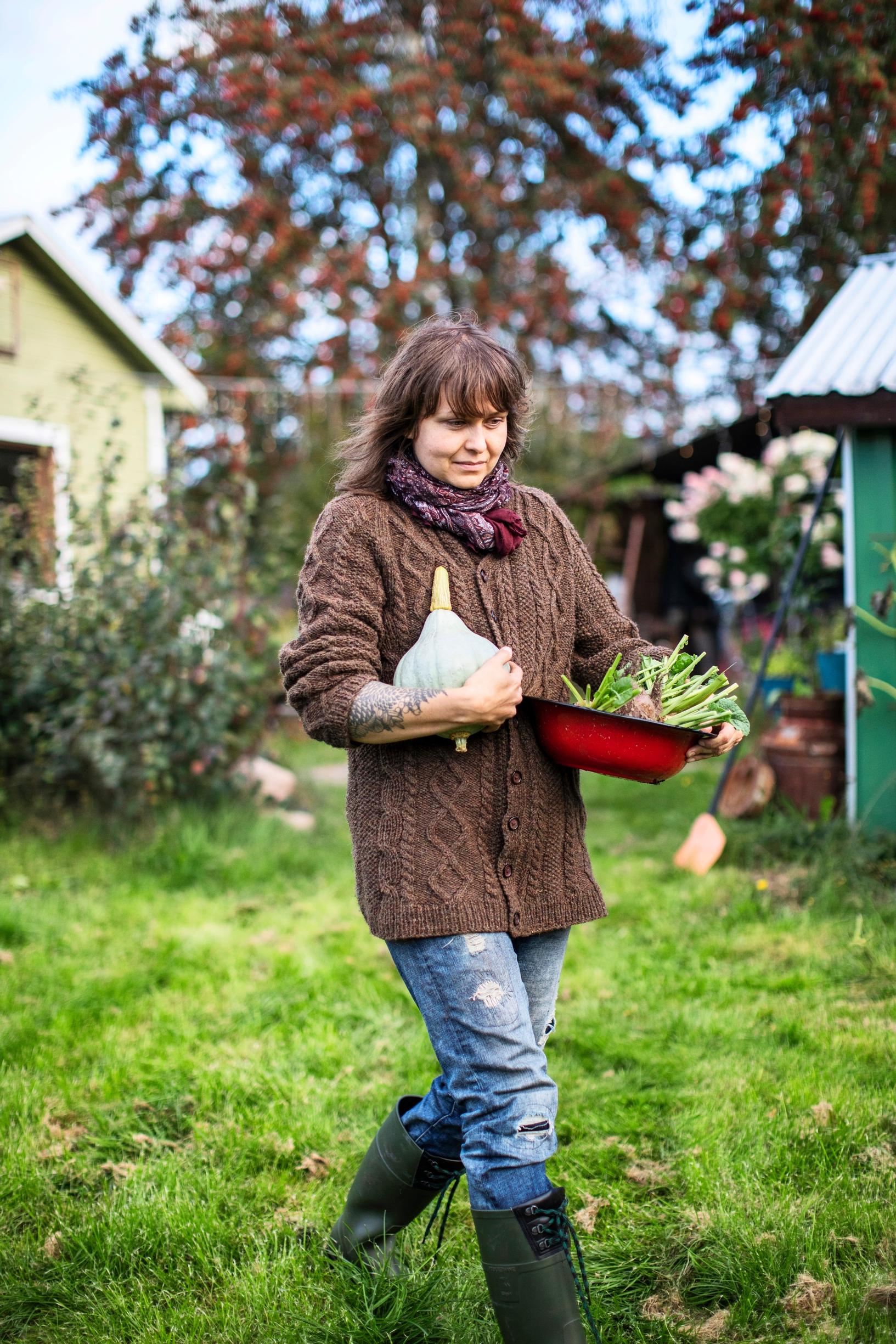
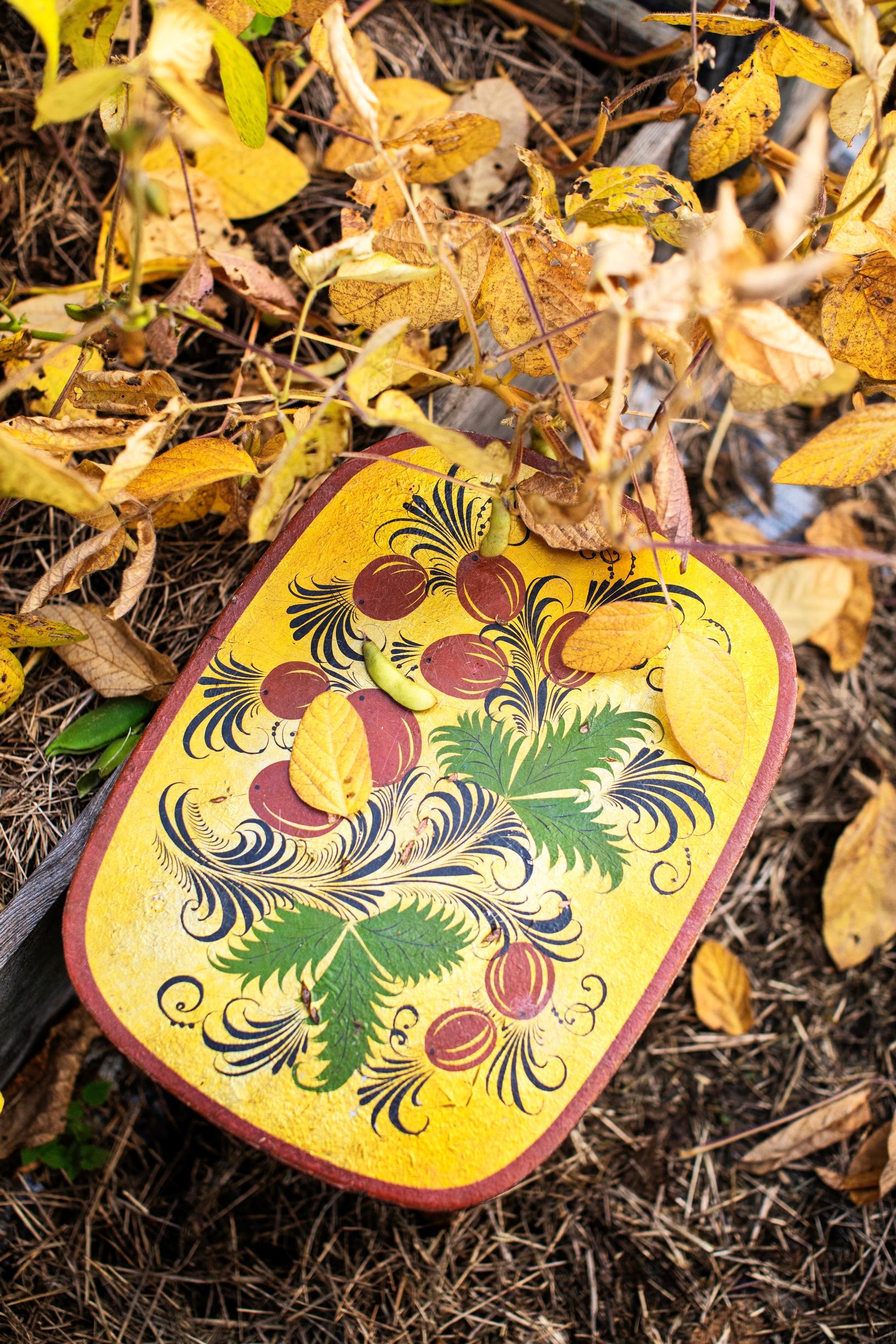
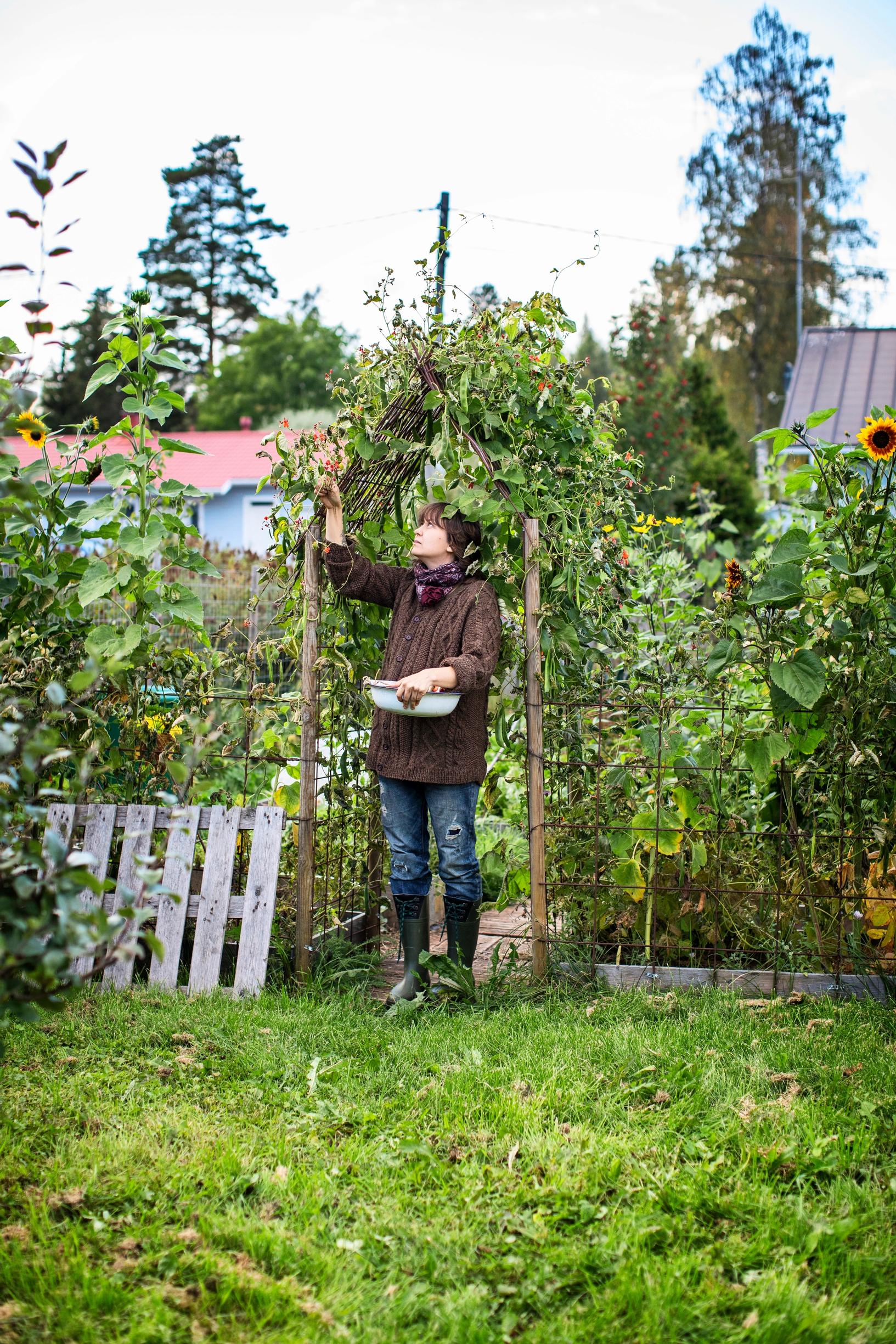

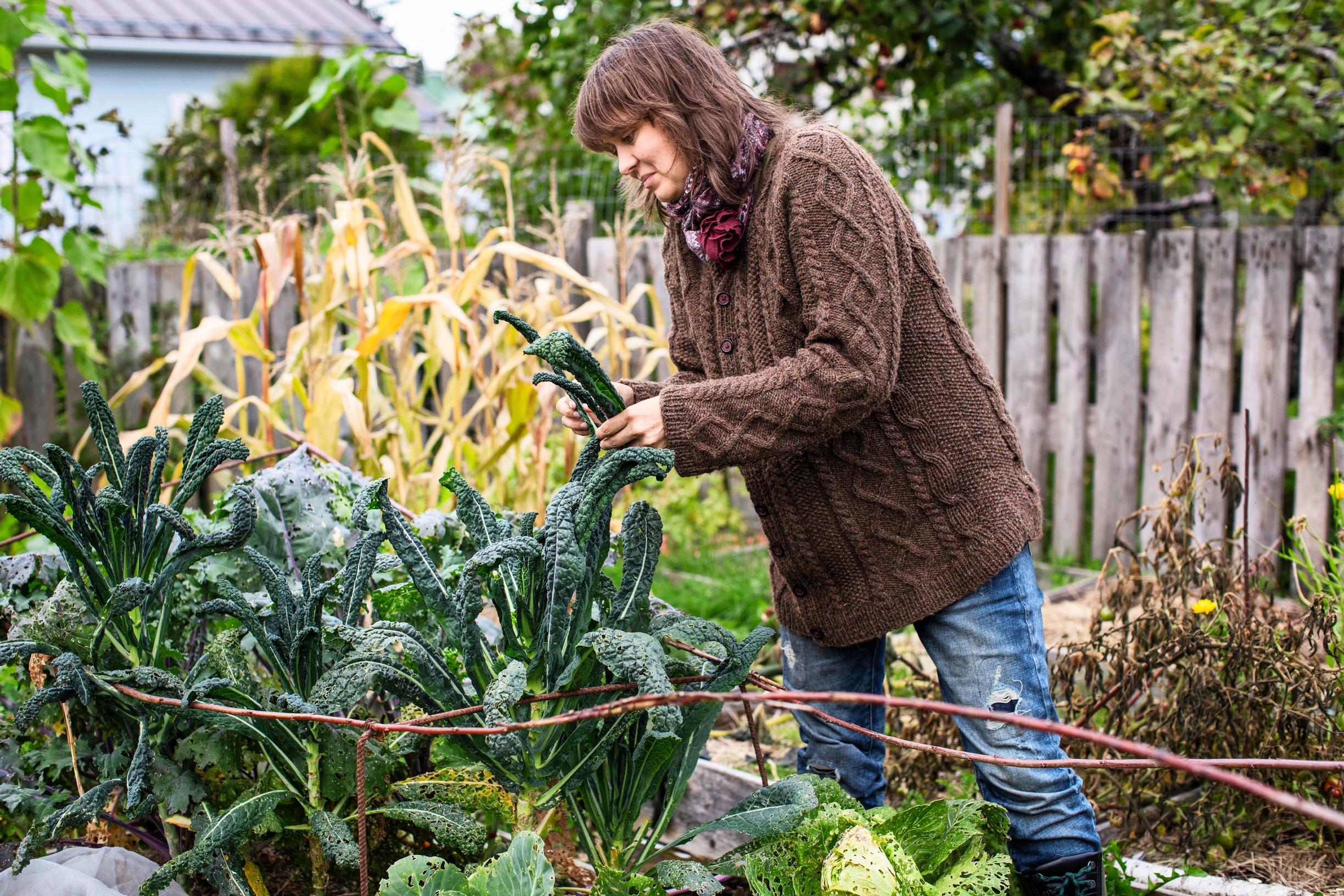
Field slugs have cut into the cabbage harvest. Luring them with pieces of carrot wasn’t very effective.
A withered pumpkin stem is like nature’s own artwork.
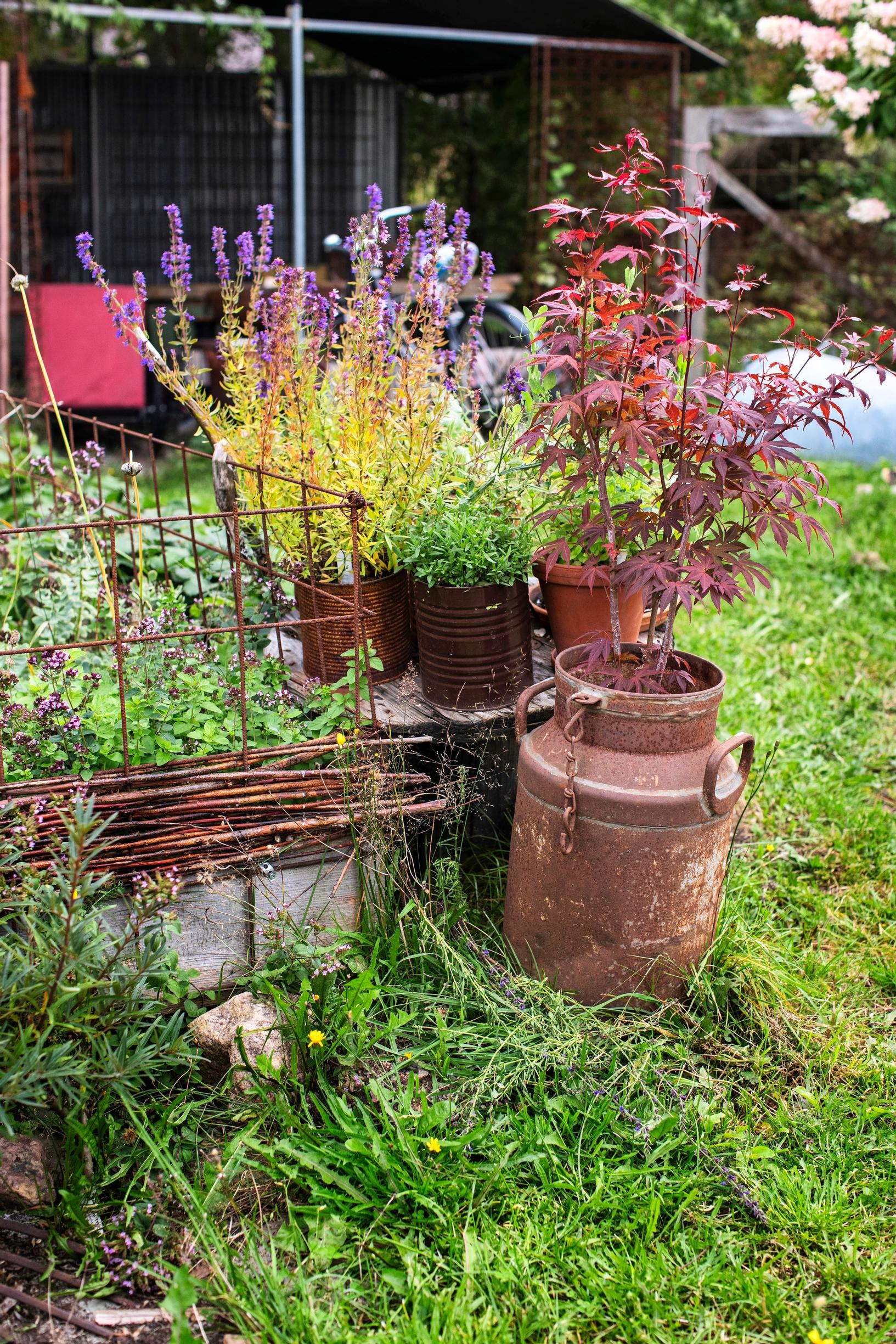
Vegan garden—Stella’s tips:
- In vegan gardening, you don’t use anything that supports or is part of the animal industry. In pest control, vegan thinking means not deliberately and unnecessarily harming insects, birds, or other small animals.
- Fertilize your garden with plant-based products instead of animal-based ones. Use plant parts for mulch on your beds, make nettle water or comfrey brew. You can also collect “golden water” (diluted urine) and use outhouse waste. Garden stores also sell ready-to-use plant-based fertilizers.
- You can make your own soil by composting. A traditional compost, leaf compost, or bokashi compost all work for improving the soil. Note that in addition to fertilizers, many store-bought soil mixes also use animal-based fertilizers such as manure as well as bone meal and blood meal.
- Save the seeds your plants produce. It’s fun and rewarding, and no vegan seeds are sold in Finland.
- In vegan gardening, the microorganisms and earthworms found in the soil are considered just as important as manure and animals are in organic farming. Earthworms keep the soil healthy and speed up the nutrient cycle.
- Ensure animals’ safety. Don’t use bird nets on berry bushes and cover water barrels. If you use a trimmer or lawn mower, be careful. Hedgehogs are at risk of getting run over.
- Avoid insecticides, chemical repellents, and traps intended for animals. Use them only if you must.
- Leave some of the harvest for animals. Set aside part of your yard where people and pets are not to go. Don’t over-clean. Leave brush piles and protect nesting sites. Put up birdhouses.
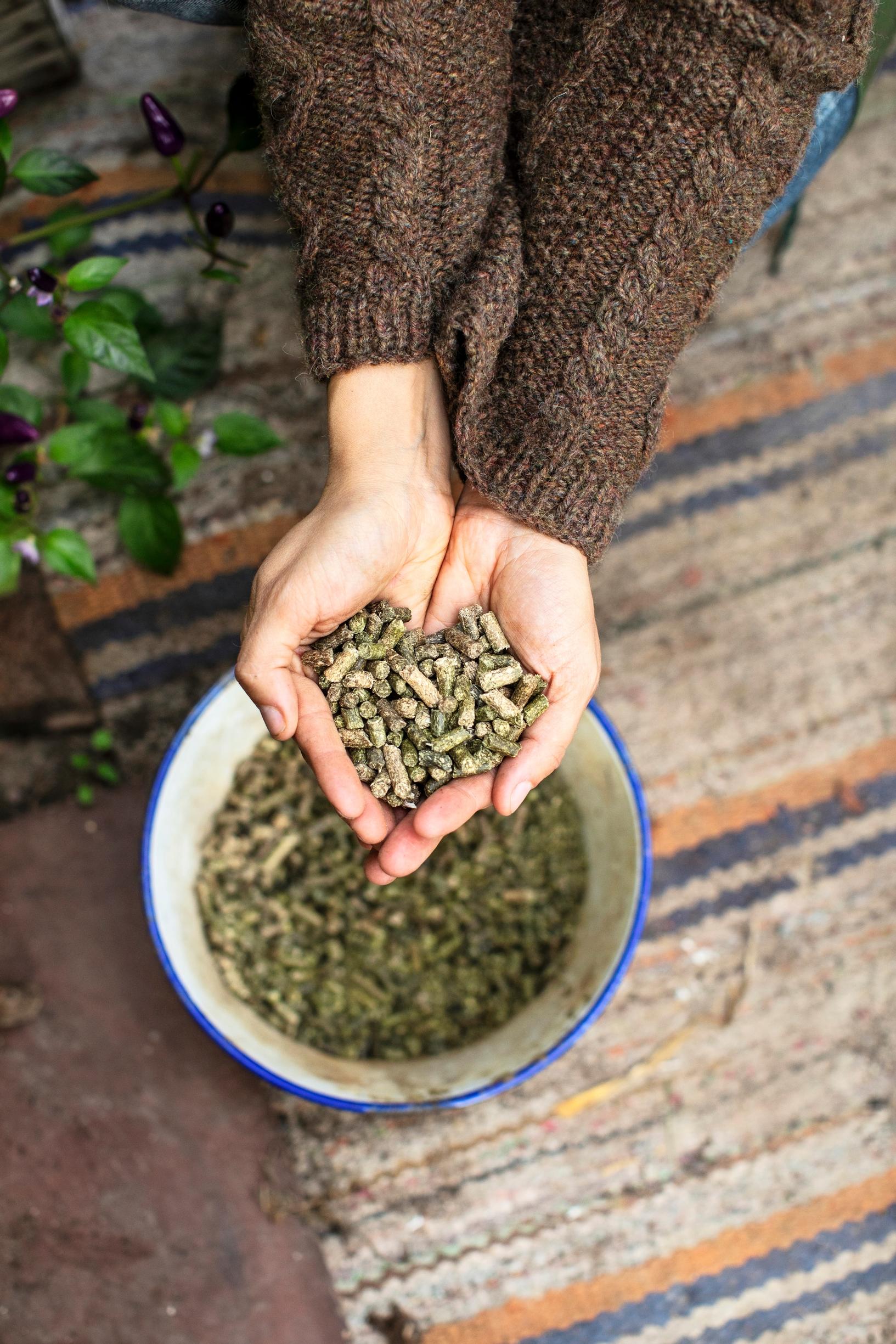
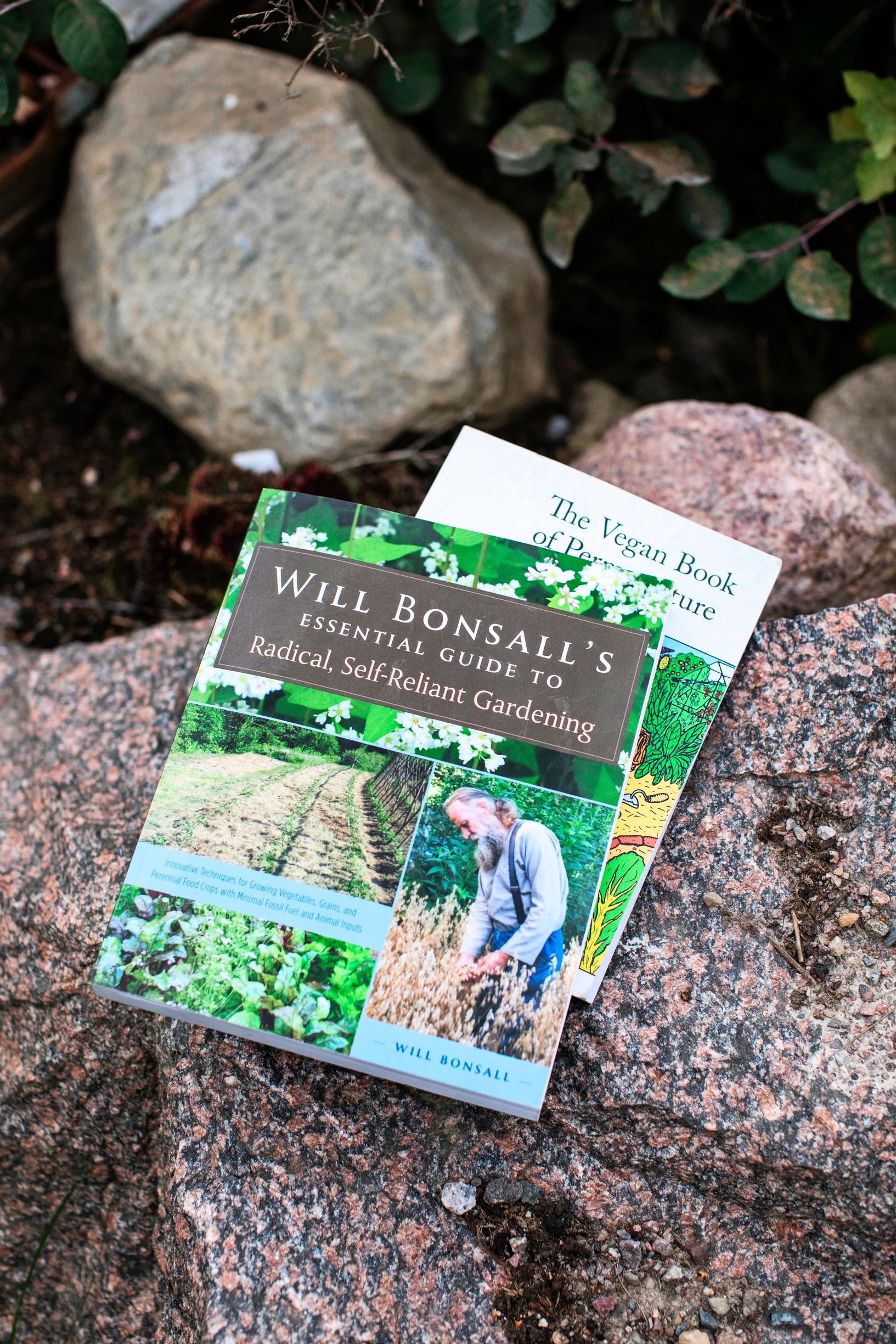
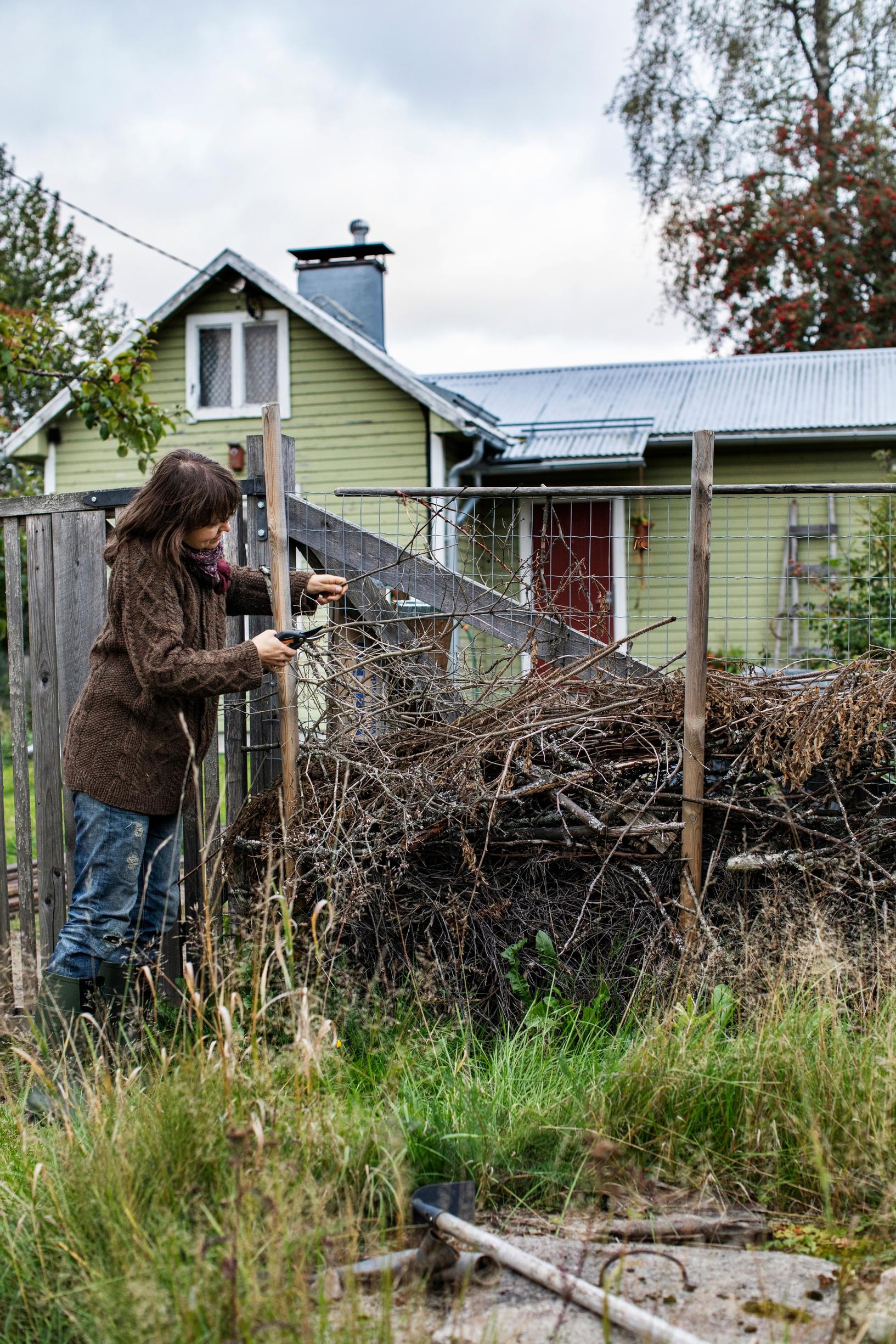
Stella’s favorite seeds to harvest:
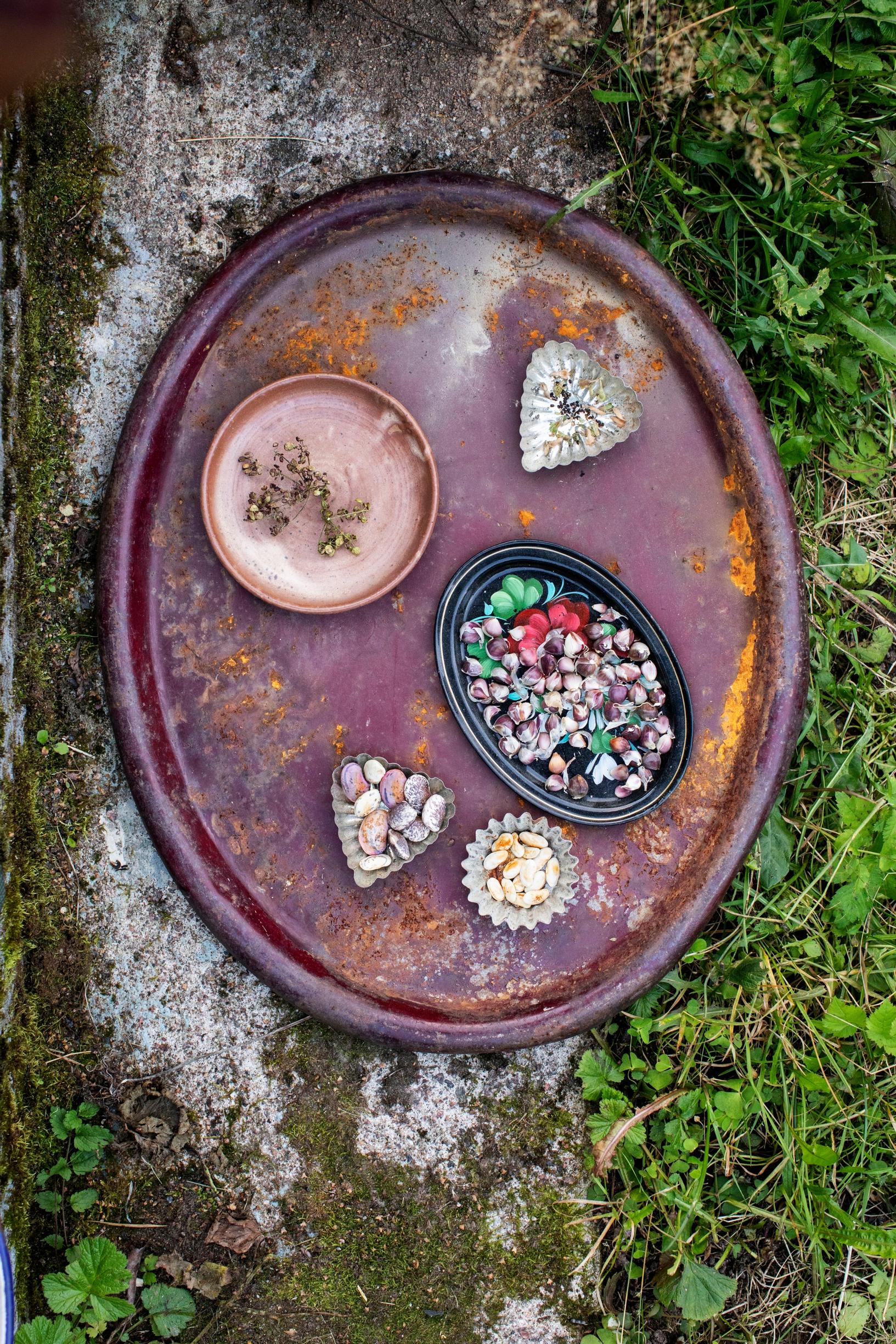
Pole bean ‘Blauhilde’
In Stella’s opinion, the timing for seed collection doesn’t always have to be exact. You can ensure the beans mature by also growing them in a greenhouse. The purple pole bean ‘Blauhilde’ is a reliable variety.
Scarlet runner bean ‘Käferbohne’
Beans are a feast for the eyes. The Austrian heirloom variety ‘Käferbohne’ has vividly colored seeds, and its flowers are multicolored too.
Parsnip ‘White Gem’
Parsnip only starts producing seeds in its second year. Stella has left some roots in the ground over winter, while others she overwintered in the cellar and planted back in the ground in spring.
Moldavian dragonhead
The blue-flowered Moldavian dragonhead arrived to Stella as a companion to a basil seedling. You can use it like lemon balm, for instance in tea. Pollinators also like it.
Garlic
Besides cloves, you can also grow garlic from bulbils. In the first year, you get a single-clove bulb, and after replanting, you get a multi-clove one.
You can find Stella on Instagram @omavarainenvegaani.




